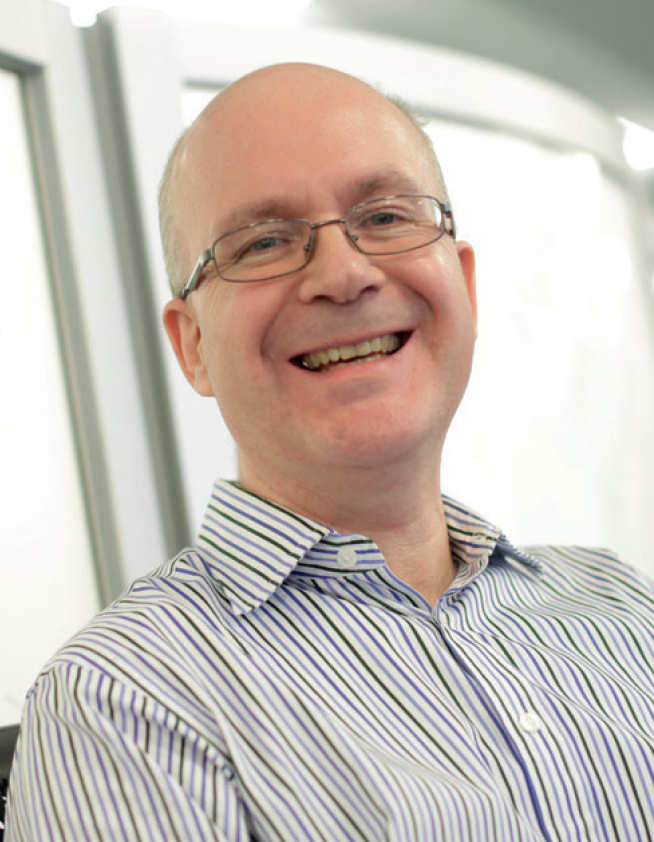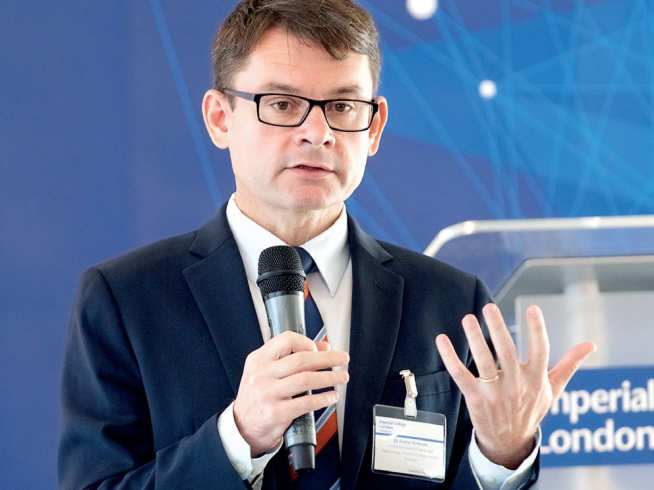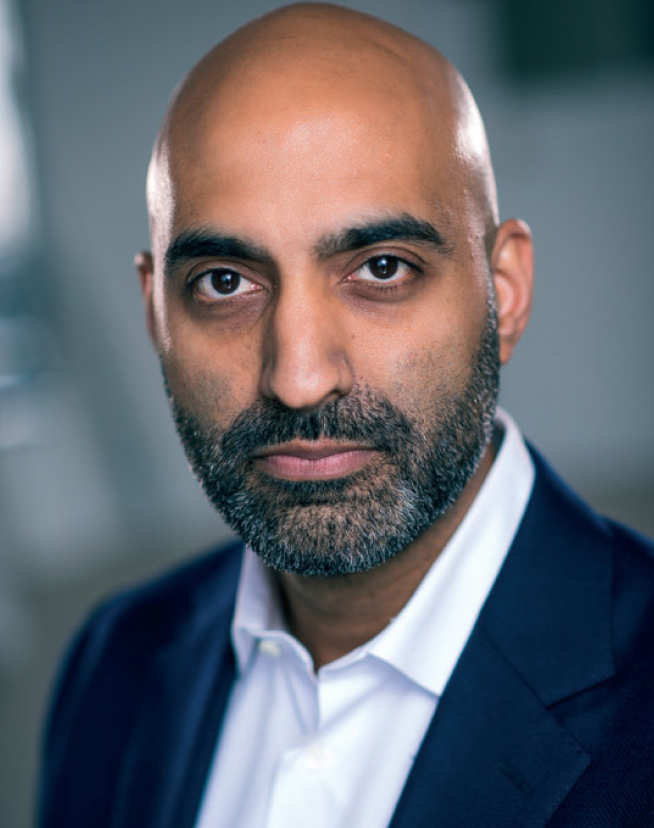Fintech
The smart money: Fintech research at Imperial
by Ian Mundell
Technology is transforming the world of finance, taking over many tasks previously handled by people and creating many new products and services. In some cases these transformations are carefully planned, with technological advances moving towards clearly understood goals. In others, the changes are taking society into uncharted territory.
Called fintech, this rapidly developing financial technology sector includes the use of advanced data analysis to track the markets and make investment decisions, and the automation of trading itself. It encompasses an explosion of start-up companies, addressing both the finance industry and consumers. And it includes novel concepts, the foremost of which are cryptocurrencies such as Bitcoin and Etherium, and the blockchain technology that makes them possible.
A new network

Many in the fintech sector have turned to Imperial for help navigating this complex new landscape. Now the College has set up a multi-faculty Fintech Network that will act as a first point of contact, and draw together researchers with relevant expertise. The Network's leaders come from the Imperial College Business School, represented by Professor Franklin Allen, and the Faculty of Engineering, represented by Professor Michael Huth, Dr PJ Beaghton, and Dr Deeph Chana. Other faculties will also be involved.
“We have seen huge interest from the finance and financial services sector in emerging technologies like artificial intelligence, machine learning, big data, blockchain and cryptocurrencies, along with advanced conventional analytics and high-scale computing,” says Dr Chana, deputy director of Imperial's Institute for Security Science and Technology.
Banks in particular are facing a host of new challenges as they try to line up existing IT systems with fintech applications and services often developed outside their own organisations. “They have to open up their channels to new IT systems, and this involves entirely new ways of thinking about cyber threats and the resilience and trustworthiness of software,” adds Professor Huth. At the same time, it is harder than ever for their staff to keep up. “The gap continues to widen between what someone would have learned five or ten years ago and what is increasingly relevant today,” says Dr Beaghton, Professor of Practice in Computing. “Resident employees in banks may never have trained in or been exposed to these new technologies.”
Cryptocurrencies
One of the hottest areas of fintech is blockchain, the technology that underpins cryptocurrencies such as Bitcoin. A blockchain is a digital ledger that records the ownership of tokens. These tokens can represent units of a currency, or anything else of value.
Multiple copies of the ledger are held across a digital network, and are used to check the validity of proposed transactions and to record their completion. Transactions are locked in by making a copy of the updated ledger, which is encrypted, time-stamped and added to its predecessor -- another block in the chain. This solves a fundamental problem of digital assets: how to stop them being duplicated and sold many times over.
Blockchains present a fascinating area of study for researchers such as Dr William Knottenbelt, Professor of Applied Quantitative Analysis in the Department of Computing. “There's a whole lot of fun that you can have from a quantitative modelling point of view,” he says. “You can study the dynamic behaviour of the blockchains, you can look at the velocity of tokens in these blockchains, you can analyse properties of the transaction networks.”
This interest has now grown to the point where he leads Imperial's Centre for Cryptocurrency Research and Engineering. “In the first place, we are interested in the protocols underlying the blockchains, everything from the consensus mechanisms to how they make themselves scalable,” he explains. “Then we are interested in all the new markets and so on that spring up around cryptocurrencies. And the final thing that we look at are applications.”
The Centre has worked with companies building blockchains, and those trying to negotiate the regulatory and technical hurdles of cryptocurrencies. It has also lent a hand to start-ups and companies launched by former students. Gradbase, for example, applies blockchain to the verification of academic qualifications, while Aventus uses it to validate event ticketing.
Being able to draw on expertise from across the College is a major asset for the Centre. “We have people in the Medical School who look at how to apply this technology to medical records, we have people in the Business School who are there to help us with questions around crypto-economics, and then we have the expertise in computer science when it comes to cryptography, distributed systems and so on.”
Improving blockchain
As well as looking at cryptocurrencies, Imperial researchers are working to make the underlying blockchain technology more efficient. For example, transactions on the Bitcoin blockchain have to be verified, which is done by a large number of 'nodes' competing for the chance to win a Bitcoin reward. To succeed, one of these Bitcoin 'miners' needs to prove it has verified the transactions and then been the first to solve a numerical problem.
This problem solving, called “proof of work”, has become extremely demanding as people race to be first. It now consumes alarming amounts of computing power and energy, yet it also forms a component of blockchain's robustness.

Professor Huth has been working on alternatives, such as reducing the number of nodes involved, with PhD student Leif-Nissen Lundbæk. “If you think of verification as an external service that you pay for, how would you configure the machines involved, and how many of them would you need to get the right balance between cost, security and availability?”
Building mathematical models to find the answer was not so hard, but it did require startling levels of precision. “Numerically it was quite challenging,” he says.
They had planned to apply the method to a system recording events in older financial computer systems. “In this way you could support audits of legacy systems in a much more resilient way,” Professor Huth says. “It would be very difficult for somebody, even in-house, to cook the books.”
But then the automotive industry became interested in lowenergy blockchain applications for on-board computers, and now Lundbæk's spin-off company, XAIN, is working with Porsche on a range of ideas. These include recording traffic data in direct communication with other vehicles, and securely controlling access to the vehicle.
This may seem a long way from fintech, but applications involving insurance or other value transactions could also be on the way. “These systems would be generic platforms for controlling access to resources and services, where the owner is in control in a very secure and resilient way.”
Money for computers
Figuring out what becomes of cryptocurrencies in the marketplace is one of the research interests of Dr Andrei Kirilenko, a former MIT professor and US regulator who now directs the Centre for Global Finance and Technology at the Imperial College Business School.
“I've been talking to crypto-miners, cryptocurrency exchanges and crypto-brokers, to try to understand what they are doing, why they do it and how we can then think of demand and supply for crypto,” he says.

Demand is a particularly interesting area for inquiry, since the initial idea that people would simply use cryptocurrencies to buy things is not developing as expected. One possibility is that the real utility of cryptocurrencies will be transactions that do not involve people at all. “As we move into environments where computers would be entering into economic transactions, maybe we need money for computers,” Dr Kirilenko explains.
For example, if you book a driverless cab to take you to the airport, that cab might need to pay tolls to use particular roads in order to get you there on time. Using conventional electronic cash to do that might not be fast or smooth enough o allow these systems to perform optimally, which is where dedicated computer currency might step in.
“Demand coming from computers, for whatever computers want to do, probably needs to be thought about differently than demand coming from humans. The speed of it, the scale of it and the usefulness of it will be different.”
Dr Kirilenko believes much more research is required on a framework for thinking about crypto-assets and blockchain from a finance perspective. “We know that the technology works, but we don't know how scalable it is, what it is capable of doing and what the financial aspects of it are,” he says. “But once finance figures something out, and finds it valuable, the power of finance is amazing.”
Work on the wire
Imperial’s Fintech network involves not only business scholars and computer scientists, but also people from the Faculty of Natural Sciences. One of these is Dr Niall Adams, Professor of Statistics, whose research interest is analysing rapidly moving streams of data.
“My work on streaming is not necessarily to do with fintech,” he explains. “This is an abstraction arising from modern data acquisition technology. It's just that fintech was perhaps the first to routinely do analysis on the wire.”
This work at the interface of statistics and machine learning has taken Professor Adams into retail finance, for example looking at credit scoring and transaction fraud detection. More recently he has been working on cybersecurity, sometimes in a finance context, and on trading systems, again dealing with rapidly moving streams of data. “In either case, what I want to produce is an algorithm that will sit there on the wire, adapt to the future, and update with fixed memory and compute costs.”
This is data that will often be looked at just once and then discarded. “If you think about trading, it's no use working out that, six months ago, I should have made a trade.”
One of Professor Adams' present research interests is developing systems able to monitor their own performance and decide when the model driving the algorithm is no longer up to the task. “It is impossible to imagine a human going into a system that might be processing thousands of transactions a second to make that decision,” he says. So it has to be self-monitoring.
“There are certain things that we know about a statistical model going wrong, and there are technical diagnostic procedures that we know how to do in batches of data that I now want to adapt to the streaming context.”
Detecting anomalies
Dr Chana also came from a natural sciences background, training as a physicist and working on image processing and signal analysis before moving into cybersecurity. Now he is interested in applying machine learning techniques used in cybersecurity to predicting changes in financial systems.

One approach involves the use of Long Short-Term Memory (LSTM) units in algorithms. “You train a machine learning algorithm to analyse chunks of a historical time series,” he explains. “The LSTM structure provides memory in the programme, meaning that it is able to learn subtle patterns and trends that you would not usually be able to extract.”
Such systems can then predict what the next step in the time series might be. “In a cybersecurity application, this could tell you that something is about to go wrong, while from a trading perspective it's an insight that could give you an advantage in the market.”
Dr Chana has been particularly interested in designing an LSTM algorithm that could tackle both the pattern of information frequency in a time series, and the information content itself. An algorithm such as this was put through its paces on a control-system testbed at Singapore University of Technology and Design.
“We used their real-world data to test the algorithm, and showed that it performed better than a lot of the other extant techniques for anomaly detection.”
Developed with UK research council funding, there may be pathways for industry to take this method further. Dr Chana thinks it has commercial potential, but also appreciates that there are challenges associated with implementing such techniques in the field.
“The problem with machine learning work is that people are very uncertain of how far they can trust these kinds of algorithms,” he says, adding that establishing trust is an area where Imperial can also play a role. “As well as building them, we can start figuring out how to continually measure and assess the validity of their outputs.”
Reducing risk
Meanwhile Dr Enrico Biffis, Associate Professor of Actuarial Finance at Imperial College Business School, is using machine learning and data analysis to help us understand and reduce risk. That might be the security risks that corporates and nongovernmental organisations face in conflict zones, or the economic impact of solar storms on power grids and aviation.
But one particularly fruitful area of research involves better understanding the risk exposure of farmers in developing countries by analysing vast amounts of satellite data and other climate information. This in turn has made it possible to design innovative insurance instruments for adverse weather events, tailored to each farmer's situation and growing methods.
This approach not only reduces risks for insurers, but encourages financial inclusion. “Rather than simply indemnifying farmers, these insurance products act as a very powerful mechanism to enhance their credit standing, or act as a substitute for collateral,” Dr Biffis explains. “By having access to an innovative insurance product, they suddenly become appealing to banks.”
With greater security and access to finance, farmers are more likely to invest in better production methods, increasing yield and reducing risk even further. “You generate a virtuous circle.”
Once designed, such systems are easily scaled-up. “As long as you have data and suitable processing power, it doesn't matter if it is one crop in Tanzania or a different crop in Nigeria, Senegal, Uganda or Zimbabwe,” Dr Biffis says, citing countries with which he is working.
For the future, there is also potential to make the delivery of payments more efficient and secure by combining mobile technology, geo-tagging and smart contracts. “You can put in place a verification process that sees that farmer X in location Y has incurred loss Z, and that the contract should automatically process a payment, which will then reach the person who is meant to get it.”
This work requires a range of expertise and experience of the kind brought together by Imperial's Fintech Network. “As soon as you build these bridges and leverage this knowledge of state-ofthe- art tools available from different fields, the returns on your research can be incredible.”
Future prospects
Meanwhile fintech's sphere of influence is expanding all the time, something that the Network needs to take into account. “Law is a good example,” says Professor Huth. “Contracts will increasingly be seen as digitised objects that you want to formalise and process automatically.”
“You quickly see the whole ecosystem starting to connect up,” adds Dr Chana. “If companies are using [fintech solutions] for accounting purposes, then of course they need to speak to lawyers and accounting specialists, so the technology itself is driving these professions to come together, to talk and to understand lots of different things.”
There is also an ambition that the Fintech Network will contribute to the broader development of the region. “London and the South-East are home to a lot of fintech start-ups, and to the financial sector of course,” says Professor Beaghton. “For Imperial, this is an incredible opportunity to create something akin to a Silicon Valley for financial technology.”
Ian Mundell is a journalist who specialises in research and higher education. He divides his time between London and Brussels.
This feature was commissioned as part of Imperial’s FinTech Network of Excellence, which was set up to draw together academics across Imperial who share an interest in financial systems and connect them to the students, educators, problem holders, innovators, regulators, users and potential research partners involved in this space. This feature also supports the work of the Imperial Business Partners FINTECH chapter, which addresses the intersection of the financial sector with disruptive technologies to provide a unique approach to problem solving for research-driven industries. Members benefit from a range of specialist services, and enjoy a programme that combines academic excellence with entrepreneurial innovation.


